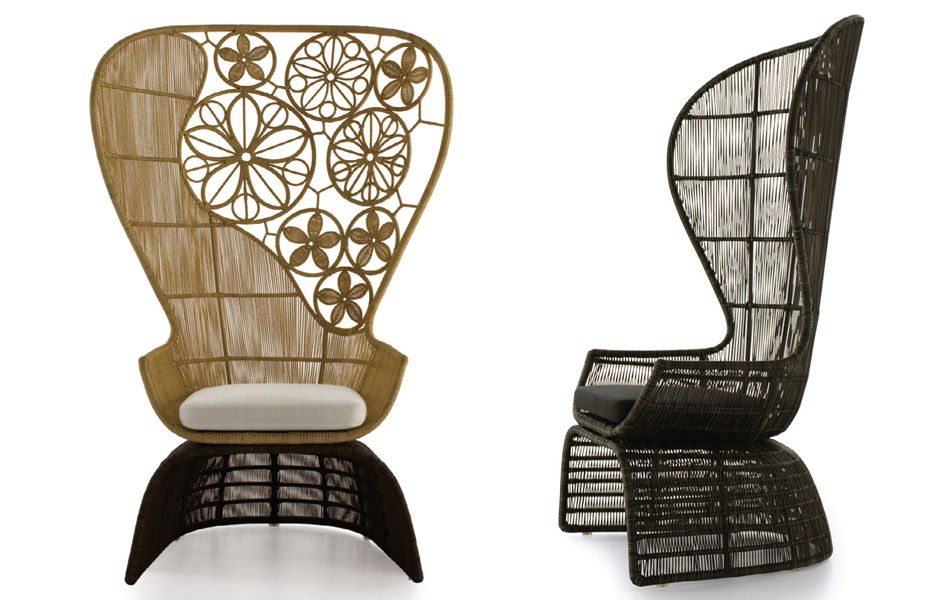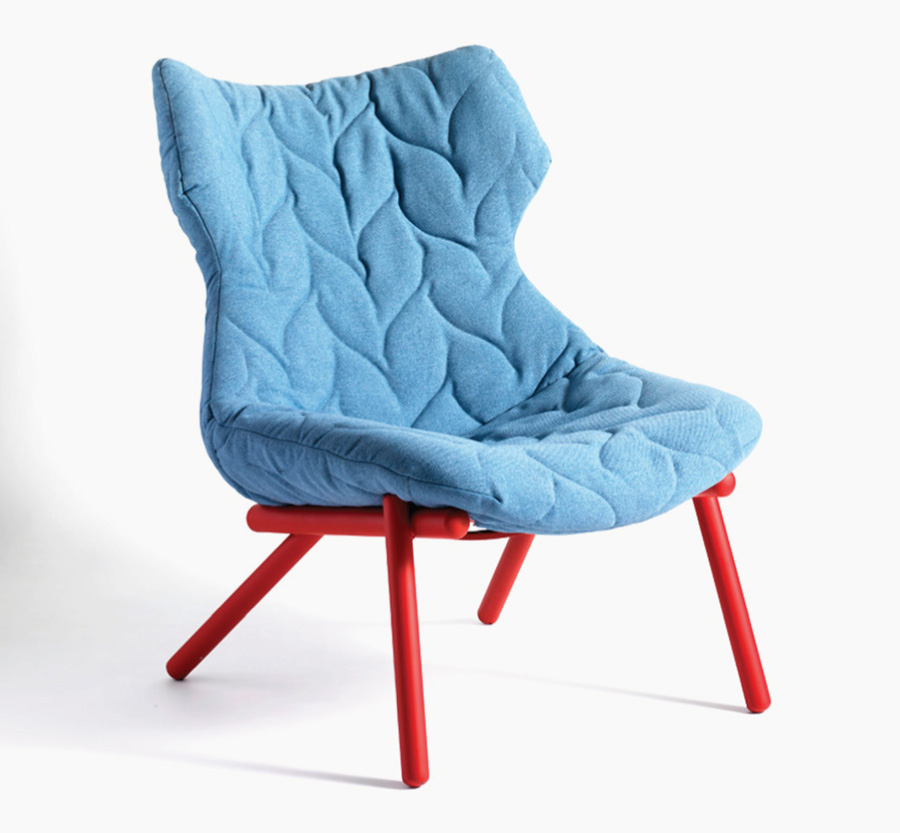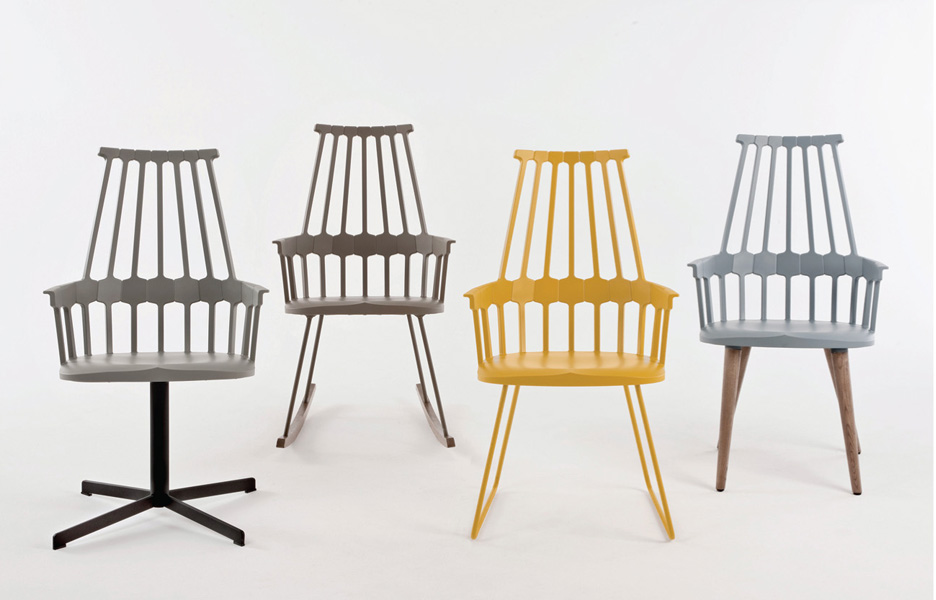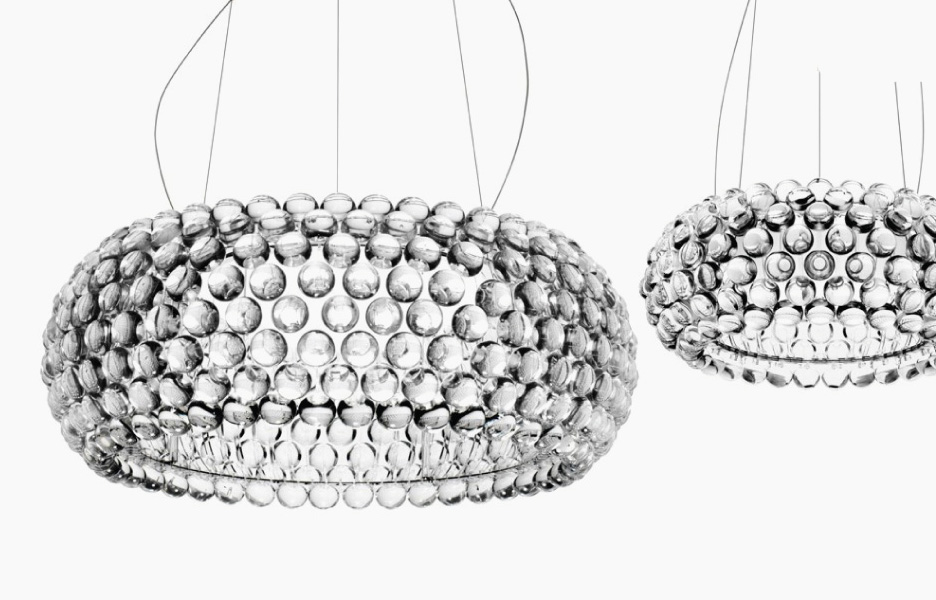
A Spaniard in Milan
A Spaniard in Milan
Share
Text: Gillian Serisier
Images courtesy of Space
Ever the Spaniard, flamboyant designer Patricia Urquiola is almost impossible to describe without also mentioning the flowing blonde hair, the grand arm gestures, curling wrists and fingers that succinctly explain the spatial relationship of her designs.
Add to this the fast paced Spanish repartee and the picture of Urquiola emerges. To say she is passionate is an understatement in the extreme, but it is her passion that has driven one of the most prolific design practices of the late 20th and early 21st centuries.
GS: With several hundred designs having reached production the criteria for success is not as simple as a commercial or even aesthetic outcome. Which is your most successful design, in your opinion?
PU: Fjord [2002] was a piece for Moroso that I think was significant for establishing credibility in the beginning. It was a product that gave me a certainty to go out on my own. There was a name: Patricia. These things are very good; in the moment you are more credible and work on your own. It’s been important; there was a moment of commercial and aesthetic success 10 years ago. It was a strange product, because it was a very simplified product in a moment of crisis and it wasn’t a company product out of the price of normal things and people said to me, ‘Are you sure a company like this is willing to do such a design?’ and I said, ‘Well, perhaps it is a game idea’ but I thought it was the thing to do.
Which other work has been important?
The Chasen, the first lamp I have done with Flos, for me was very important. For me they are all children. In that I am very feminine, I am protective. When you analyse a design you like, I like the process, it’s bueno. I like the past of the work; the item is at the end. I like the process and the work of doing it; I fill myself up with the project.
Does your approach to a project change in collaboration either with a company or designer?
Not me, I don’t change, I am always the same. It is like with a relationship. You have friends that you will go to cook together or share a book or go to the cinema, or sport or different things. What is important in life is to be with people you like and you can get from the relationship the best. I think if you want to be a designer, you want to enjoy the process. And processes are very long in design, things look very fresh, but you see the chair from Kartell [Comeback], which is in plastic, took four years to come out.
For me, that is normal. Or the [Landscape] collection done with Rosenthal in porcelain took another four years, sometimes a year or six months for a prototype, then lots of little problems and things. Then you have to find this kind of empathy with the people you are doing the process with. Then the relationship is different each time because you are creating something different. It’s not dramatically better, but you use the part that is connecting with them and with me.
When you collaborate with a company are you working to a brief of their stipulation, within their aesthetic or do you present something to them and go from there?
Both, I have the luck to work with a few companies, very interesting ones, for a long time. You have a relationship; you know each other. Then in confidence I say to them I am doing some research at the studio and we have some prototypes and things that I think would be nice and then we make appropriate ideas and we share together. All the time, potentially, I try to understand what can be done, what research will be OK with these companies. It is not created just for any company. When you work for a long time you know. If you choose the wrong partner, the work is extra. Then, other times, they give me a kind of briefing, then I move around.
I am not so comfortable in the rhythm, I always step outside and come back and make appropriate the brief that they give me. In the end you have to know what you are working in and you have to understand the potential of the relationship and be clever and understand if this is the right thing to do with the relationship. Sometimes it is not.
The concept of the readymade was so important in Achille Castiglioni’s practice; has this continued to be an influence?
Yes, oh yes, there is one in the book that I call ‘readymade’. You know the cover that taxi drivers put over the seat that is done with balls… beads. If I go in a taxi I check: is it comfortable? I do an interview. I ask about the work and how it works and why they use it; it makes me very curious. Cellini had a plastic chair in the studio and were doing an exhibition about my work in Verona. So we did the chair with the cover stretched perfectly. There was one I called my ‘readymade’ and dedicated to Achille. That part of the product of Achille was very rewarding: to work in that style of readymade.
Sometimes we were styling, sometimes you were working with readymade, sometimes with other processes. There were different sides of the process. Me, perhaps I substitute partially. Of course there are elements of readymade with some work, but any type of research connected to craft activity, if it has a connection with the process, I am interested. Sometimes a piece is ingrained and it looks like craft, but it is not craft at all; on the contrary. All those crossovers interest me.
Your relationship with Achille went from student to assistant to a peer relationship.
I got in love with design because of him. Absolutely. My thesis was with him. It was the beginning of the multi-tech in that period; all the systems in the house coming together. We did big research on that and then because he was working with Bticino, an electrical company for modern cables and fridges. And then we did our physical project that was a carpet made of different layers of felt. In the middle were Pirelli cables with charges – special cables from Pirelli – flat cables in covers. With Bticino, we did special plugs. That was very funny, like Scottish skirts – plaid – and you could put it through the drawing on the carpet for a lamp and it was working: it was a real novelty.
There was electrical and for [the] phone and it was Christmas when I did the thesis and there was a Christmas tree working and a lamp and a lot of things and a phone and everything was connected to the island. Everything was low, low voltage. I said, ‘Wait a moment’ and threw down a glass of water and all the teachers were… [arms flung upwards]! It was a very low, low voltage, so no problem. But that was the idea: we live with so many things plugged and then have the voltage we have. It was a big discussion and very interesting: [Achille] was very proud. We got the maximum amount [awardable to a thesis] and it was very serious, it was lovely. The thesis got melted in the basement of my home. There was a flood and I was away and forgot and the felt compacted and you couldn’t even… it became ephemeral and disappeared.
What is the driving idea behind your work, are you interested in form over materiality or aesthetics function…?
I’m an experimental artist I hope. I put my values, my education and my culture into the research that goes and flows and goes. Then it’s a lead I get in relation with a technique of an idea I get in the studio, which we develop and do on our own. Then we speak to someone to do it. Or sometimes someone comes to me and asks me and I see the possibilities they have. But each project can be a new page: I don’t have any prejudice in that. I think that comes from this kind of experimentation I hope we have in the studio. Then we try to have a taste to understand many things, but all those things are around.
Such as craft?
I have been always interested in relationships with industrial, and I am working with a lot of industrial designers, but in some way away from what is known. In 2006 I did a house in Cologne and started investigating craft and then mixing craft and industrial design together because I thought it was something good to do, to understand more. Now I think it is quite natural, but not eight years ago. Sometimes when there is something that is important to you, you begin to do it anyway and then, as time goes by, you start to understand well why you were so interested. I think the new generations, especially the one of makers, they will be so easily connected with new technologies that will simplify the way of doing things that they have to have an artisan attitude to understand what they want to do.
Not artisan to produce, but artisan to understand why things are done and what it is about the first approach to things. I hope I will keep the personal work in the studio between analogic and digital sides and putting them together. We continually do in the studio things by computer. We are doing research, for example, with new interfaces where we are working with new techniques and technologies to create handmade exhibitions. We are working in the realm of craft where we are making carpeting and things in Asia and other parts of the world – always making a direct relationship and getting involved with the human side of that creation.
Patricia’s latest body of work for Kartell, as well as the Caboche lights in collaboration with Eliana Gerotto for Foscarini and iconic pieces from her oeuvre are currently on view at Space.




















